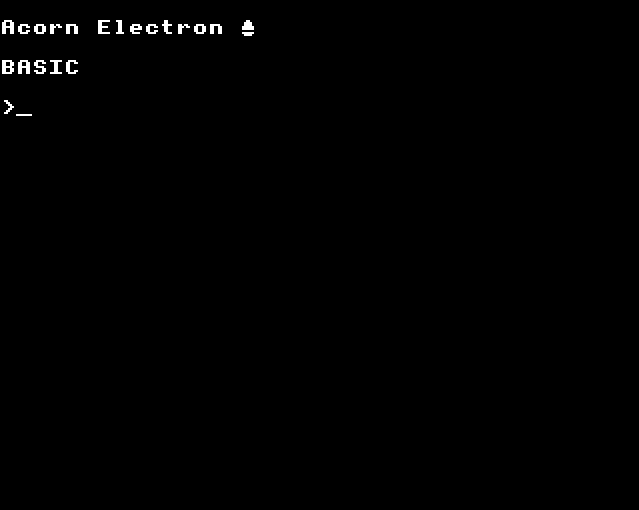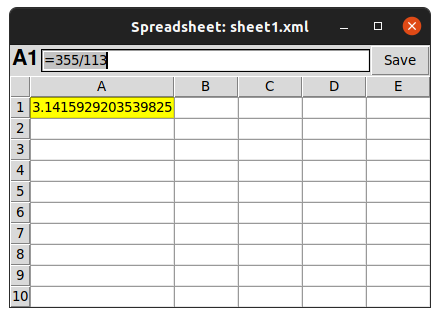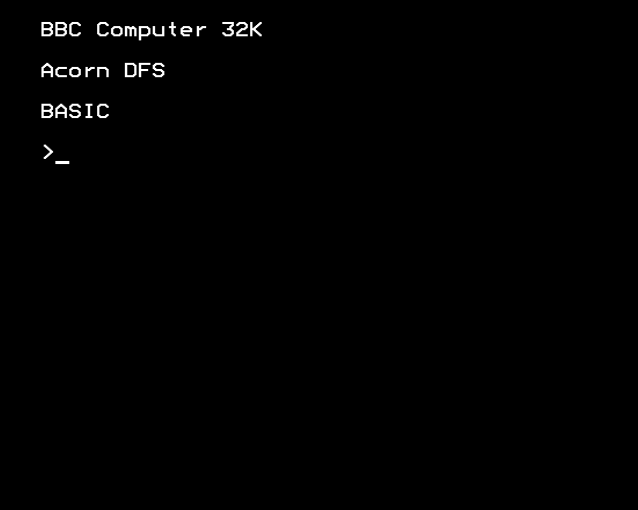|
Acornsoft ViewSheet
ViewSheet is a spreadsheet program produced in the 1980s by Acornsoft for use with the BBC Micro and Acorn Electron microcomputers. It was distributed as a pre-installed ROM with some computer models, such as the Master. ViewSheet was written by Mark Colton. Description ViewSheet supports spreadsheets of up to 255 by 255 cells in size. Each cell can contain a number, formula or text label. Cells are referred to as ''slots'' in the official Acornsoft documentation. The program is supplied with a keyboard card listing the various commands, which on the BBC Micro is placed under the clear plastic strip above the function keys. The spreadsheet is entered by typing *SHEET. All BBC Micro screen modes are supported, and the background and foreground colours can be changed by use of Ctrl-S,n,n,0,0,0 key sequences. The program supports user-defined windows that can display cells from various different parts of the spreadsheet within the same screen. This is useful in lieu of a WIMP enviro ... [...More Info...] [...Related Items...] OR: [Wikipedia] [Google] [Baidu] |
Mark Colton
Mark Colton (17 March 1961 – 5 August 1995) was a British racing driver and software author. He was killed in practice for Craigantlet Hillclimb speed event in Northern Ireland after his Pilbeam's front wing failed and he hit a telegraph pole. Colton's best year was 1994, when he was runner-up to David Grace. Outside motorsport, Colton was an influential figure in the development of software for personal computers, particularly those made by Acorn Computers, being the author of the Acornsoft ''View'' range and ''View Professional'' for the BBC Micro while working at Protechnic in the early 1980s. View Professional was the predecessor of the ''PipeDream'' integrated suite for the Cambridge Z88 portable computer, Acorn Archimedes and IBM PC compatibles. Having founded Colton Software to market PipeDream, the company followed up with a range of applications - ''Wordz'', ''Resultz'' and ''Recordz'' - comprising the ''Fireworkz'' suite, this being released for RISC OS and Microsoft ... [...More Info...] [...Related Items...] OR: [Wikipedia] [Google] [Baidu] |
Acornsoft
Acornsoft was the software arm of Acorn Computers, and a major publisher of software for the BBC Micro and Acorn Electron. As well as games, it also produced a large number of educational titles, extra computer languages and business and utility packages – these included word processor ''VIEW'' and the spreadsheet '' ViewSheet'' supplied on ROM and cartridge for the BBC Micro/Acorn Electron and included as standard in the BBC Master and Acorn Business Computer. History Acornsoft was formed in late 1980 by Acorn Computers directors Hermann Hauser and Chris Curry, and David Johnson-Davies, author of the first game for a UK personal computer and of the official Acorn Atom manual "Atomic Theory and Practice". David Johnson-Davies was managing director and in early 1981 was joined by Tim Dobson, Programmer and Chris Jordan, Publications Editor. While some of their games were clones or remakes of popular arcade games (e.g. ''Hopper'' is a clone of Sega's ''Frogger'', '' Snappe ... [...More Info...] [...Related Items...] OR: [Wikipedia] [Google] [Baidu] |
BBC Micro
The British Broadcasting Corporation Microcomputer System, or BBC Micro, is a series of microcomputers and associated peripherals designed and built by Acorn Computers in the 1980s for the BBC Computer Literacy Project. Designed with an emphasis on education, it was notable for its ruggedness, expandability, and the quality of its operating system. An accompanying 1982 television series, ''The Computer Programme'', featuring Chris Serle learning to use the machine, was broadcast on BBC2. After the Literacy Project's call for bids for a computer to accompany the TV programmes and literature, Acorn won the contract with the ''Proton'', a successor of its Atom computer prototyped at short notice. Renamed the BBC Micro, the system was adopted by most schools in the United Kingdom, changing Acorn's fortunes. It was also successful as a home computer in the UK, despite its high cost. Acorn later employed the machine to simulate and develop the ARM architecture. While nine models ... [...More Info...] [...Related Items...] OR: [Wikipedia] [Google] [Baidu] |
Acorn Electron
The Acorn Electron (nicknamed the Elk inside Acorn and beyond) was a lower-cost alternative to the BBC Micro educational/ home computer, also developed by Acorn Computers Ltd, to provide many of the features of that more expensive machine at a price more competitive with that of the ZX Spectrum. It had 32 kilobytes of RAM, and its ROM included BBC BASIC II together with the operating system. Announced in 1982 for a possible release the same year, it was eventually introduced on 25 August 1983 priced at £199. The Electron was able to save and load programs onto audio cassette via a supplied cable that connected it to any standard tape recorder that had the correct sockets. It was capable of bitmapped graphics, and could use either a television set, a colour (RGB) monitor or a monochrome monitor as its display. Several expansions were made available to provide many of the capabilities omitted from the BBC Micro. Acorn introduced a general-purpose expansion unit, the Plus 1, off ... [...More Info...] [...Related Items...] OR: [Wikipedia] [Google] [Baidu] |
Spreadsheet
A spreadsheet is a computer application for computation, organization, analysis and storage of data in tabular form. Spreadsheets were developed as computerized analogs of paper accounting worksheets. The program operates on data entered in cells of a table. Each cell may contain either numeric or text data, or the results of formulas that automatically calculate and display a value based on the contents of other cells. The term ''spreadsheet'' may also refer to one such electronic document. Spreadsheet users can adjust any stored value and observe the effects on calculated values. This makes the spreadsheet useful for "what-if" analysis since many cases can be rapidly investigated without manual recalculation. Modern spreadsheet software can have multiple interacting sheets and can display data either as text and numerals or in graphical form. Besides performing basic arithmetic and mathematical functions, modern spreadsheets provide built-in functions for common financial a ... [...More Info...] [...Related Items...] OR: [Wikipedia] [Google] [Baidu] |
Proprietary Software
Proprietary software is software that is deemed within the free and open-source software to be non-free because its creator, publisher, or other rightsholder or rightsholder partner exercises a legal monopoly afforded by modern copyright and intellectual property law to exclude the recipient from freely sharing the software or modifying it, and—in some cases, as is the case with some patent-encumbered and EULA-bound software—from making use of the software on their own, thereby restricting his or her freedoms. It is often contrasted with open-source or free software. For this reason, it is also known as non-free software or closed-source software. Types Origin Until the late 1960s computers—large and expensive mainframe computers, machines in specially air-conditioned computer rooms—were usually leased to customers rather than sold. Service and all software available were usually supplied by manufacturers without separate charge until 1969. Computer vendors ... [...More Info...] [...Related Items...] OR: [Wikipedia] [Google] [Baidu] |
Spreadsheet
A spreadsheet is a computer application for computation, organization, analysis and storage of data in tabular form. Spreadsheets were developed as computerized analogs of paper accounting worksheets. The program operates on data entered in cells of a table. Each cell may contain either numeric or text data, or the results of formulas that automatically calculate and display a value based on the contents of other cells. The term ''spreadsheet'' may also refer to one such electronic document. Spreadsheet users can adjust any stored value and observe the effects on calculated values. This makes the spreadsheet useful for "what-if" analysis since many cases can be rapidly investigated without manual recalculation. Modern spreadsheet software can have multiple interacting sheets and can display data either as text and numerals or in graphical form. Besides performing basic arithmetic and mathematical functions, modern spreadsheets provide built-in functions for common financial a ... [...More Info...] [...Related Items...] OR: [Wikipedia] [Google] [Baidu] |
The Micro User
''The Micro User'' (titled ''BBC Micro User'' in the first three issues) was a British specialist magazine catering to users of the BBC Microcomputer series, Acorn Electron, Acorn Archimedes and, to a limited extent, the Cambridge Z88. It had a comprehensive mix of reviews of games, application software, and the latest Acorn computers; type-in programs (duplicated on a "cover disk" which was available separately), a correspondence page offering help with computer problems, and approachable technical articles on programming and the BBC Micro's internals. The magazine hosted the long-running ''Body Building'' series by Mike Cook, in which each article introduced a small electronics project that could be built and connected to one of the BBC Micro's I/O ports. The project could be ordered in kit form or fully assembled, or the reader could source the parts and design as the articles contained a circuit diagram. There were regular columns on adventure gaming from two successive c ... [...More Info...] [...Related Items...] OR: [Wikipedia] [Google] [Baidu] |
Read-only Memory
Read-only memory (ROM) is a type of non-volatile memory used in computers and other electronic devices. Data stored in ROM cannot be electronically modified after the manufacture of the memory device. Read-only memory is useful for storing software that is rarely changed during the life of the system, also known as firmware. Software applications (like video games) for programmable devices can be distributed as plug-in cartridges containing ROM. Strictly speaking, ''read-only memory'' refers to memory that is hard-wired, such as diode matrix or a mask ROM integrated circuit (IC), which cannot be electronically changed after manufacture. Although discrete circuits can be altered in principle, through the addition of bodge wires and/or the removal or replacement of components, ICs cannot. Correction of errors, or updates to the software, require new devices to be manufactured and to replace the installed device. Floating-gate ROM semiconductor memory in the form of erasab ... [...More Info...] [...Related Items...] OR: [Wikipedia] [Google] [Baidu] |
BBC Master
The BBC Master is a home computer released by Acorn Computers in early 1986. It was designed and built for the BBC, British Broadcasting Corporation (BBC) and was the successor to the BBC Micro, BBC Micro Model B. The Master 128 remained in production until 1993. Design The Master series featured several improvements on preceding BBC Micro models. The systems had RAM as standard, alleviating the shortage of available RAM which had amongst other things discouraged use of the best graphics modes in the original design. The Master 128 and its variants had two cartridge slots mounted behind the new numerical keypad, these employing sockets that provided a superset of the Acorn Electron Acorn Electron#Acorn Plus 1, Plus 1 cartridge interface capabilities, supporting the use of physically compatible Electron cartridges, but also supporting enhanced electrical characteristics for some of the cartridge connector pins. Rather than the MOS Technology 6502 Central processing unit, micropro ... [...More Info...] [...Related Items...] OR: [Wikipedia] [Google] [Baidu] |
WIMP (computing)
In human–computer interaction, WIMP stands for "windows, icons, menus, pointer", denoting a style of interaction using these elements of the user interface. Other expansions are sometimes used, such as substituting "mouse" and "mice" for menus, or "pull-down menu" and "pointing" for pointer. Though the acronym has fallen into disuse, it has often been likened to the term ''graphical user interface (GUI)''. Any interface that uses graphics can be called a GUI, and WIMP systems derive from such systems. However, while all WIMP systems use graphics as a key element (the icon and pointer elements), and therefore are GUIs, the reverse is not true. Some GUIs are not based in windows, icons, menus, and pointers. For example, most mobile phones represent actions as icons and menus, but often do not rely on a conventional pointer or containerized windows to host program interactions. WIMP interaction was developed at Xerox PARC (see Xerox Alto, developed in 1973) and popularized wi ... [...More Info...] [...Related Items...] OR: [Wikipedia] [Google] [Baidu] |
BBC BASIC
BBC BASIC is a version of the BASIC programming language released in 1981 as the native programming language for the BBC Micro home/personal computer, providing a standardized language for a UK computer literacy project of the BBC. It was written mainly by Sophie Wilson. BBC BASIC, based on the older Atom BASIC for the Acorn Atom, extended contemporary microcomputer BASICs with named DEF PROC/DEF FN procedures and functions, REPEAT UNTIL loops, and IF THEN ELSE structures inspired by COMAL. The interpreter also included statements for controlling the BBC Micro's four-channel sound output and its low-/high-resolution eight-mode graphics display. Due to a number of optimizations, BBC BASIC ran programs much faster than Microsoft BASIC running on similar machines. The optimizations included using multiple linked lists for variable lookup rather than a single long list, pre-defining the location of integer variables, and having separate integer maths routines. Speed was furthe ... [...More Info...] [...Related Items...] OR: [Wikipedia] [Google] [Baidu] |







